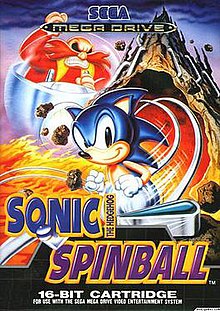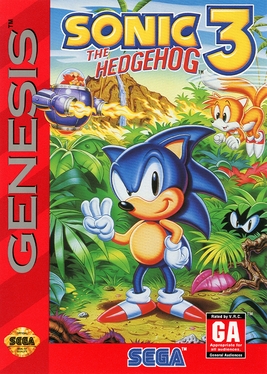
Sonic the Hedgehog 3 is a 1994 platform game developed and published by Sega for the Genesis. Like previous Sonic games, players traverse side-scrolling levels while collecting rings and defeating enemies. They control Sonic and Tails, who attempt to retrieve the Chaos Emeralds to stop Doctor Robotnik from relaunching his space station, the Death Egg, after it crash-lands on a mysterious floating island. Sonic 3 introduces Knuckles the Echidna, the island guardian, who lays traps for Sonic and Tails.

Sonic the Hedgehog is a 1991 platform game developed by Sonic Team and published by Sega for the Genesis/Mega Drive. It was released in North America on June 23 and in PAL regions and Japan the following month. Players control Sonic the Hedgehog, who can run at near supersonic speeds; Sonic sets out on a quest to defeat Dr. Robotnik, a scientist who has imprisoned animals in robots and seeks the powerful Chaos Emeralds. The gameplay involves collecting rings as a form of health, and a simple control scheme, with jumping and attacking controlled by a single button.

Sonic the Hedgehog CD is a 1993 platform game developed and published by Sega for the Sega CD. As Sonic the Hedgehog, the player attempts to protect an extraterrestrial body, Little Planet, from Doctor Robotnik. Like other Sonic games, Sonic runs through themed levels while collecting rings and defeating robots. Sonic CD introduces time travel as a game mechanic. By traveling through time, players can access different versions of stages, featuring alternative layouts, music, and graphics.
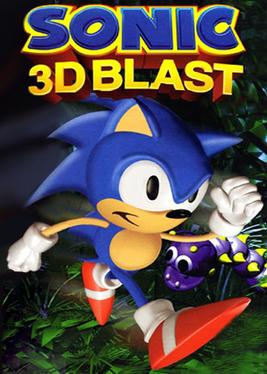
Sonic 3D Blast, known in Europe and Japan as Sonic 3D: Flickies' Island, is a 1996 platform game in the Sonic the Hedgehog series for the Sega Genesis and Sega Saturn. As Sonic the Hedgehog, the player embarks on a journey to save the Flickies, birds enslaved by Doctor Robotnik. The player must guide Sonic through a series of themed levels to collect Flickies and defeat Robotnik. Though it retains game mechanics from prior Sonic games, Sonic 3D Blast is differentiated by its 2D isometric perspective, with pre-rendered 3D models converted into sprites.

Sonic & Knuckles is a 1994 platform game developed and published by Sega. Players control Sonic the Hedgehog or Knuckles the Echidna in their quests to save Angel Island; Sonic tries to stop Doctor Robotnik from re-launching his orbital weapon, the Death Egg, while Knuckles scuffles with Robotnik's minion, EggRobo. Like previous Sonic games, players traverse side-scrolling levels at high speeds while collecting rings and defeating enemies.

Comix Zone is a 1995 beat 'em up video game developed and published by Sega for the Genesis. It is set within the panels of a comic book with dialogue rendered within talk bubbles and sprites, and backgrounds possessing the bright colors and dynamic drawing style of superhero comics. This style is in previous video games, for example Ocean Software's Batman: The Caped Crusader in 1988, but Comix Zone stretched the idea to such an extent that Sega applied for and was granted a patent for a "videogame system for creating a simulated comic book game".

Dr. Robotnik's Mean Bean Machine is a falling block puzzle game developed by Compile and published by Sega. It was released for the Sega Genesis / Mega Drive in North America and Europe in November 1993, and ported to the Game Gear in 1993 and Master System in 1994.
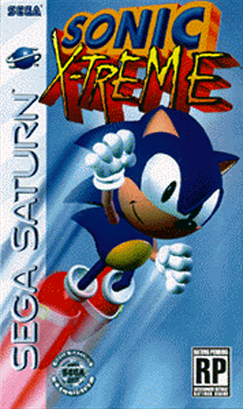
Sonic X-treme was a platform game developed by Sega Technical Institute from 1994 until its cancellation in 1996. It was planned as the first fully 3D Sonic the Hedgehog game, taking Sonic into the 3D era of video games, and the first original Sonic game for the Sega Saturn. The storyline followed Sonic on his journey to stop Dr. Robotnik from stealing six magic rings from Tiara Boobowski and her father. X-treme featured open levels rotating around a fixed center of gravity and, like previous Sonic games, featured collectible rings and fast-paced gameplay.

Sonic Drift is a 1994 racing game based on Sonic the Hedgehog developed and published by Sega for the Game Gear. Players control one of four characters as they race to the finish line, with 18 tracks themed after levels in 1991's Sonic the Hedgehog.

Shadow the Hedgehog is a 2005 platform game developed by Sega Studios USA and published by Sega as part of the Sonic the Hedgehog series. The game follows Shadow as he attempts to learn about his past, while suffering from amnesia, as he does an alien invasion plagues the Earth. Shadow the Hedgehog reintroduces third-person shooter elements from Sonic Adventure and Sonic Adventure 2, but greatly expands upon the concept and introduces nonlinear gameplay to the Sonic franchise. To defeat enemies and progress through the game, Shadow can use a variety of weapons from each faction and complete missions that will determine the game's plot and subsequently playable levels.

Sonic the Hedgehog: Triple Trouble is a 1994 platform game developed by Aspect and published by Sega for the Game Gear. It is the sequel to Sonic Chaos (1993) and features classic side-scrolling Sonic gameplay. The player controls either Sonic the Hedgehog or Miles "Tails" Prower as they venture to protect the powerful Chaos Emeralds from Doctor Robotnik, Knuckles the Echidna, and series newcomer Nack the Weasel. Sonic and Tails' unique abilities, as well as various power-ups, can assist the player in gameplay.
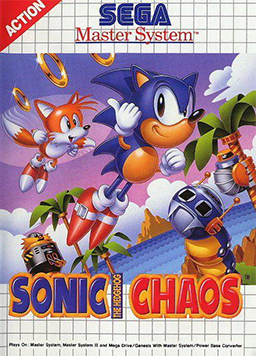
Sonic Chaos is a 1993 platform game published by Sega for the Master System and Game Gear. Players control Sonic the Hedgehog and his sidekick Miles "Tails" Prower in their quest to retrieve the Chaos Emeralds from Doctor Robotnik, who has stolen them to construct nuclear weapons. Gameplay involves running through stages, collecting rings, and defeating enemies. It is largely based on the Master System version of Sonic the Hedgehog 2, and is thus considered a follow-up to that game. Chaos is the first Sonic game for the Master System and Game Gear to feature Tails as a separate playable character with his own unique abilities.

Sonic Gems Collection is a 2005 compilation of Sega video games, primarily those in the Sonic the Hedgehog series. The emulated games span multiple genres and consoles—from the Sega Genesis to the Sega Saturn—and retain the features and errors of their initial releases with minimal edits. Player progress is rewarded with demos of other Sonic games, videos, and promotional artwork spanning the history of the Sonic franchise. While its 2002 predecessor, Sonic Mega Collection, comprises popular Sonic games, Gems Collection focuses on more obscure games, such as Sonic CD (1993) and Sonic the Fighters (1996). Other non-Sonic games are included, but some, such as the Streets of Rage trilogy, are omitted in the Western localization.

Sonic the Hedgehog 2 is a 1992 platform game developed by Aspect and published by Sega for the Master System and Game Gear. It is the sequel to the 8-bit Sonic the Hedgehog (1991) and follows Sonic as he attempts to get the Chaos Emeralds back to rescue his friend Miles "Tails" Prower from Dr. Robotnik. Like the first Sonic the Hedgehog, players run through levels at high speeds while collecting rings and defeating enemies. Although it shares the same title with Sonic the Hedgehog 2 for the Sega Genesis and their releases coincided, the games have little in common and share no levels.

Sonic the Hedgehog is a video game series and media franchise created by the Japanese developers Yuji Naka, Naoto Ohshima, and Hirokazu Yasuhara for Sega. The franchise follows Sonic, an anthropomorphic blue hedgehog who battles the evil Doctor Eggman, a mad scientist. The main Sonic the Hedgehog games are platformers mostly developed by Sonic Team; other games, developed by various studios, include spin-offs in the racing, fighting, party and sports genres. The franchise also incorporates printed media, animations, feature films, and merchandise.
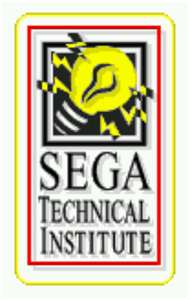
Sega Technical Institute (STI) was an American video game developer owned by Sega. Founded by the Atari veteran Mark Cerny in 1990, STI sought to combine elite Japanese developers, including the Sonic Team programmer Yuji Naka and his team, with new American talent. STI developed games for Sega Genesis, including several Sonic the Hedgehog games, before it was closed at the end of 1996.

Sonic the Hedgehog 2 is a 1992 platform game developed by Sega Technical Institute (STI) for the Sega Genesis. Players control Sonic as he attempts to stop Doctor Robotnik from stealing the Chaos Emeralds to power his space station. Like the first Sonic the Hedgehog (1991), players traverse side-scrolling levels at high speeds while collecting rings, defeating enemies, and fighting bosses. Sonic 2 introduces Sonic's sidekick Miles "Tails" Prower and features faster gameplay, larger levels, a multiplayer mode, and special stages featuring pre-rendered 3D graphics.

Doctor Ivo"Eggman"Robotnik is the main antagonist of Sega's Sonic the Hedgehog franchise. Eggman was created and designed by Naoto Ohshima as part of many design choices for Sega's new mascot. After the creation of Sonic the Hedgehog, Ohshima chose to use his previous egg-shaped character to create the antagonist of the 1991 video game Sonic the Hedgehog, making him the arch-nemesis of the series' eponymous main character.

Sonic's Ultimate Genesis Collection is a compilation of video games developed by Backbone Entertainment and published by Sega for PlayStation 3 and Xbox 360. The compilation features 48 Sega games which were previously released for the Sega Genesis, arcades and the Master System. It is the sequel to the Sega Genesis Collection released previously for the PlayStation 2 and PlayStation Portable, but contains 16 more games.
